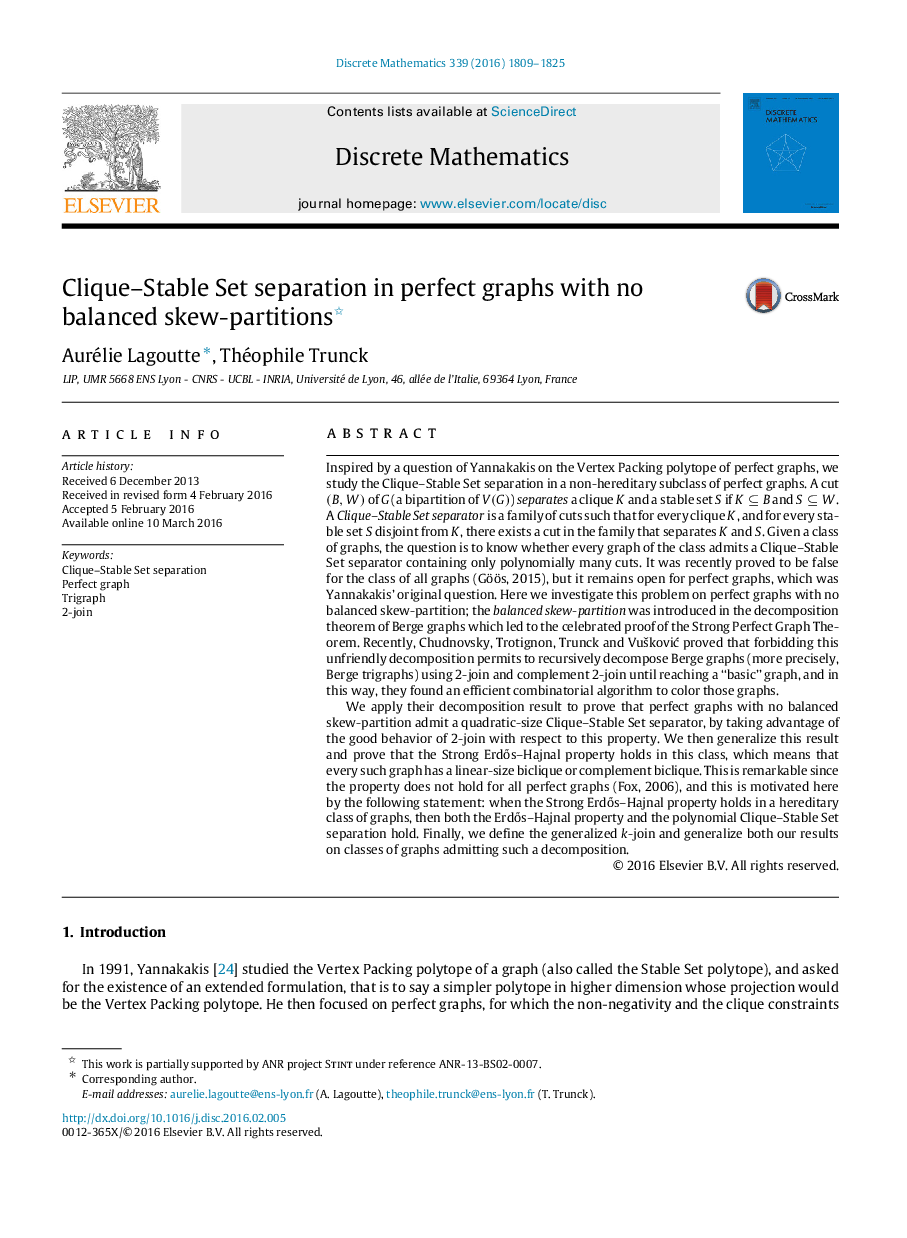| کد مقاله | کد نشریه | سال انتشار | مقاله انگلیسی | نسخه تمام متن |
|---|---|---|---|---|
| 4647068 | 1342325 | 2016 | 17 صفحه PDF | دانلود رایگان |

Inspired by a question of Yannakakis on the Vertex Packing polytope of perfect graphs, we study the Clique–Stable Set separation in a non-hereditary subclass of perfect graphs. A cut (B,W)(B,W) of GG (a bipartition of V(G)V(G)) separates a clique KK and a stable set SS if K⊆BK⊆B and S⊆WS⊆W. A Clique–Stable Set separator is a family of cuts such that for every clique KK, and for every stable set SS disjoint from KK, there exists a cut in the family that separates KK and SS. Given a class of graphs, the question is to know whether every graph of the class admits a Clique–Stable Set separator containing only polynomially many cuts. It was recently proved to be false for the class of all graphs (Göös, 2015), but it remains open for perfect graphs, which was Yannakakis’ original question. Here we investigate this problem on perfect graphs with no balanced skew-partition; the balanced skew-partition was introduced in the decomposition theorem of Berge graphs which led to the celebrated proof of the Strong Perfect Graph Theorem. Recently, Chudnovsky, Trotignon, Trunck and Vušković proved that forbidding this unfriendly decomposition permits to recursively decompose Berge graphs (more precisely, Berge trigraphs) using 2-join and complement 2-join until reaching a “basic” graph, and in this way, they found an efficient combinatorial algorithm to color those graphs.We apply their decomposition result to prove that perfect graphs with no balanced skew-partition admit a quadratic-size Clique–Stable Set separator, by taking advantage of the good behavior of 2-join with respect to this property. We then generalize this result and prove that the Strong Erdős–Hajnal property holds in this class, which means that every such graph has a linear-size biclique or complement biclique. This is remarkable since the property does not hold for all perfect graphs (Fox, 2006), and this is motivated here by the following statement: when the Strong Erdős–Hajnal property holds in a hereditary class of graphs, then both the Erdős–Hajnal property and the polynomial Clique–Stable Set separation hold. Finally, we define the generalized kk-join and generalize both our results on classes of graphs admitting such a decomposition.
Journal: Discrete Mathematics - Volume 339, Issue 6, 6 June 2016, Pages 1809–1825